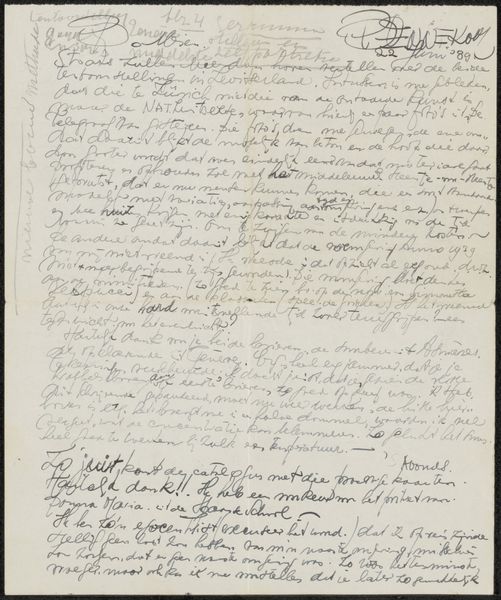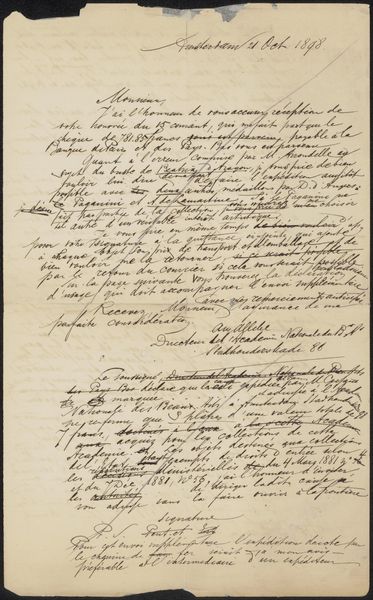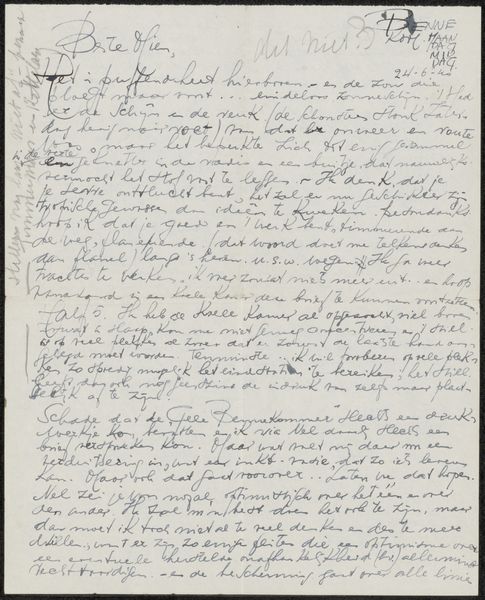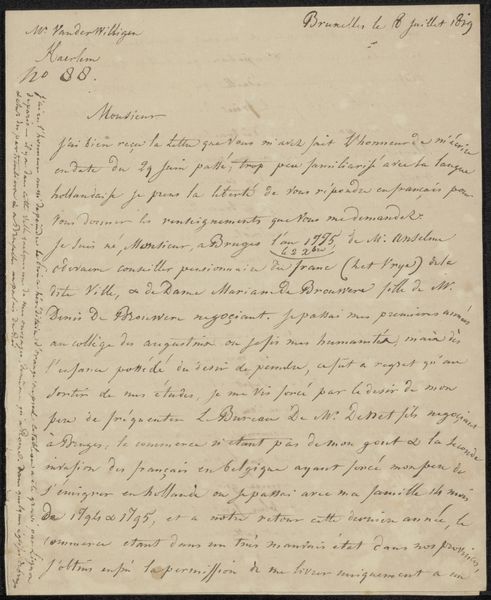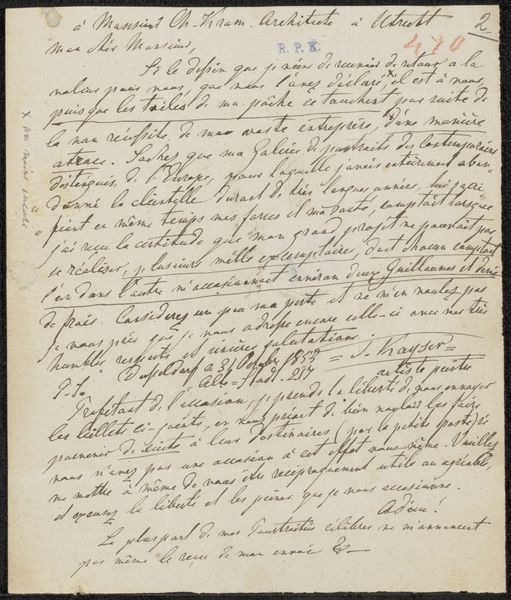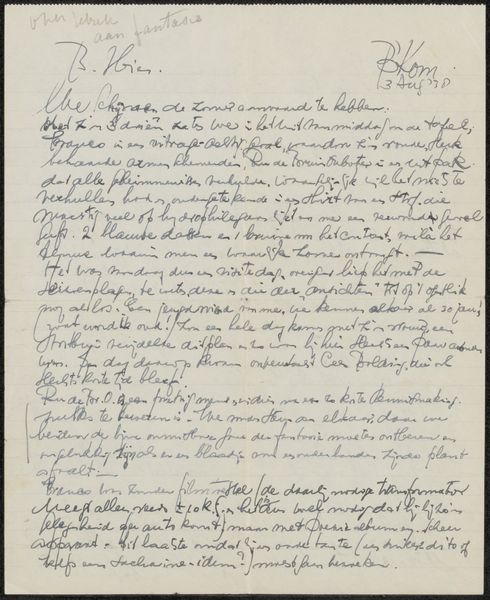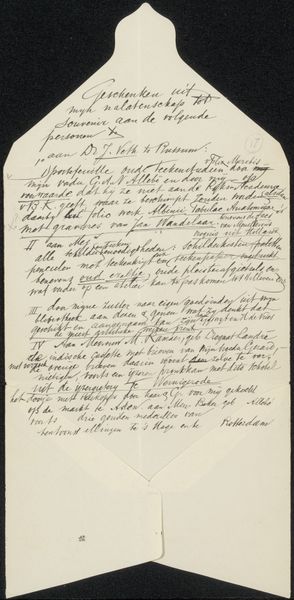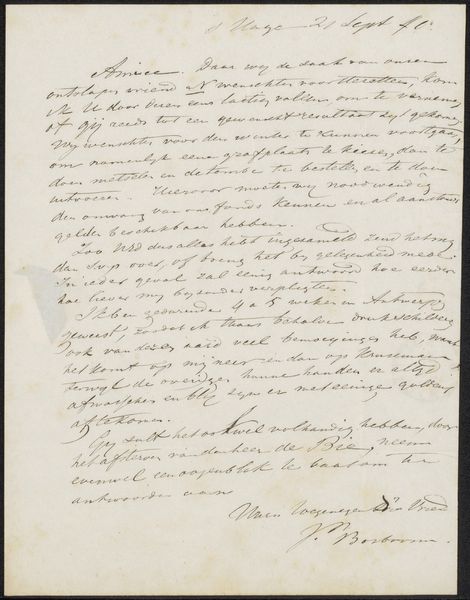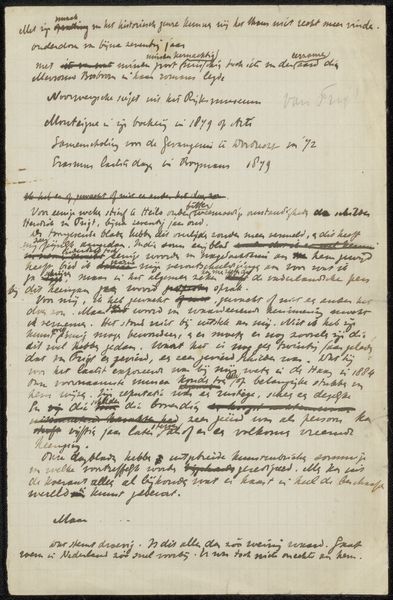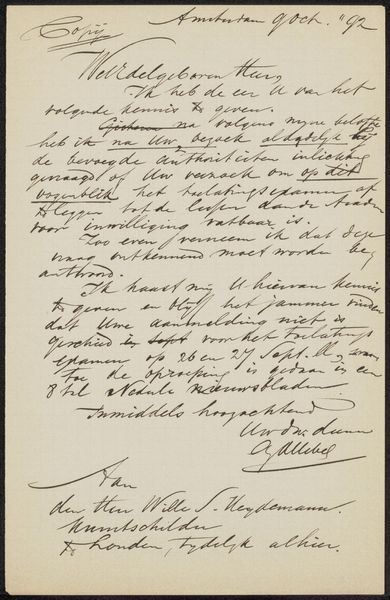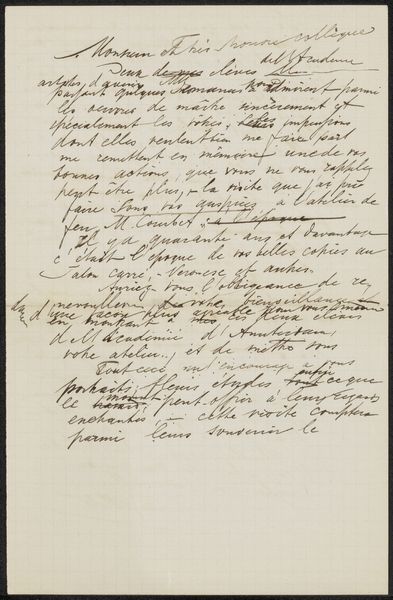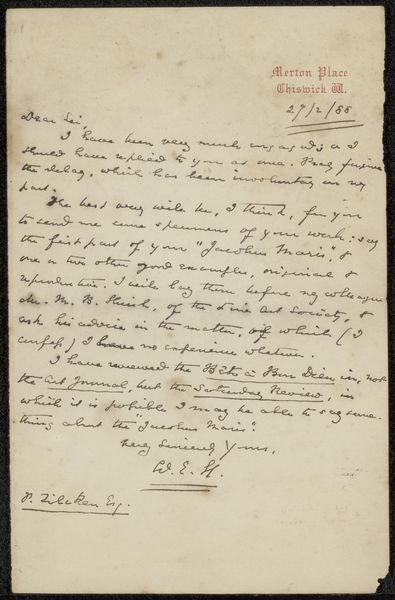
Intekenbiljet voor Johannes Bosboom en Anna Louisa Geertruyda Bosboom-Toussaint Possibly 1851 - 1854
0:00
0:00
reiniercraeyvanger
Rijksmuseum
drawing, paper, ink
#
drawing
#
aged paper
#
dutch-golden-age
#
paper
#
ink
#
pen work
#
calligraphy
Copyright: Rijks Museum: Open Domain
Editor: So, here we have "Intekenbiljet voor Johannes Bosboom en Anna Louisa Geertruyda Bosboom-Toussaint" by Reinier Craeyvanger, likely made sometime between 1851 and 1854. It's a drawing in ink on paper. The script gives it this intimate feeling, like a personal note. What stands out to you? Curator: I see an artifact deeply embedded in its social and material conditions. Look at the penmanship, the paper itself—likely rag paper, expensive at the time. This wasn't mass-produced. Consider the labor involved in creating such a document. It's a material record of cultural patronage. Do you see evidence of a split between "high art" and craft here? Editor: Well, it looks like calligraphy, which straddles both worlds, right? Was there a clear separation at the time? Curator: Not as clear as some might think. The act of inscription itself—the very physical labor of writing—was seen as having value, particularly when tied to the support of artists like the Bosbooms. Think about the economics: who is commissioning this work, who is purchasing this subscription? Are they part of a rising bourgeoisie asserting its status through art consumption? Editor: Ah, so it's not just about the pretty writing but also the *how* and the *why* it was made and consumed. So this document points to the relationship between the artists, the patrons and the means of production. Curator: Precisely. And the inherent value society assigned to particular skills, social relationships and labor. This single page captures a network of connections. It questions the narrative that reduces art to only its aesthetic qualities. Editor: That definitely adds a new dimension to viewing the work, looking at the materials and their context really opens things up. Thanks! Curator: Indeed, viewing the materiality as an indicator, not merely as a tool, gives voice to other historical players in cultural production.
Comments
No comments
Be the first to comment and join the conversation on the ultimate creative platform.
